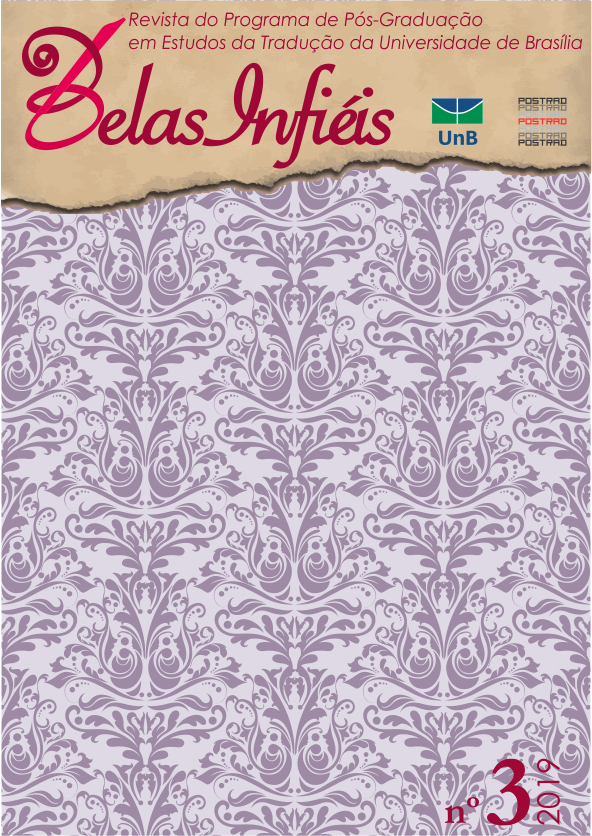A Kind of Magic: Aspects of The Rhyme in Original and Translated Poems
DOI:
https://doi.org/10.26512/belasinfieis.v8.n3.2019.26341Keywords:
Rhymes. Translation. Poetry. Poetic paraphrase. Robert Browning.Abstract
Rhymes in original and translated poems are the subject of this article. Its aim is to analyze them as potentially creative constraints in original poems and poetic translations. So, the article analyzes commonly accepted ideas about rhymes, such as the assumption that rhymes limit expression, in order to refute them by means of arguments revolving around the creative potential of rhymes in original poems and translated ones, rhymes being considered as conventions or constraints that, once they are used properly by the poet and the poet-translator, are a component of their originality. From this angle, the proper use of rhyme is related to the creation of logically convincing contexts for rhymes. In the case of poetic translations, in which the translator can only use a foreign context as a starting point for the literary experience to be developed in his translation, the foreign context itself is already an extra contraint when rhymes are involved, which proves that constraints in translation are bigger than those ones in original writing. These ideas about rhyme are also presented in the article as being related to the author´s personal views about poetic translation, ones inspired by critical writings by Jean Boasse-Beier and by Michael Hamburger. According to the author´s views, following Jean Boasse-Beier´s steps, translation is a constrained art, and “poetic paraphrases”, which he defines idiosyncratically from his developments of Dryden´s seminal ideas on the subject, is the way he chooses to deal with constraints in poetic translation. At last, the article analyzes passages from the translation of The Pied Piper of Hamelin in the light of these ideas, and includes an updated version of the poem published in previous decades.
Downloads
Downloads
Published
How to Cite
Issue
Section
License
Given the public access to this journal, the texts are free to use but requires the recognition of the original authorship and initial publication in this journal to be properly stated.
 The journal allows the use of works published for non-commercial purposes, including the right to submit the work to publicly accessible databases. Published contributions are the sole and exclusive responsibility of the author(s).Â



















